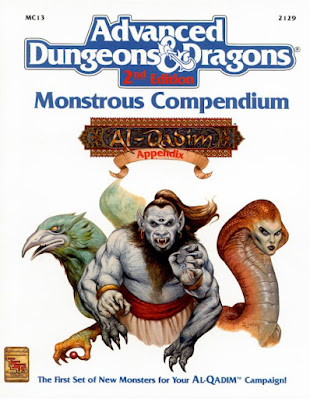Jonstown Jottings #57: The Cups of Clearwine
 Much like the Miskatonic Repository for Call of Cthulhu, Seventh Edition, the Jonstown Compendium is a curated platform for user-made content, but for material set in Greg Stafford’s mythic universe of Glorantha. It enables creators to sell their own original content for RuneQuest: Roleplaying in Glorantha, 13th Age Glorantha, and HeroQuest Glorantha (Questworlds). This can include original scenarios, background material, cults, mythology, details of NPCs and monsters, and so on, but none of this content should be considered to be ‘canon’, but rather fall under ‘Your Glorantha Will Vary’. This means that there is still scope for the authors to create interesting and useful content that others can bring to their Glorantha-set campaigns.—oOo—
Much like the Miskatonic Repository for Call of Cthulhu, Seventh Edition, the Jonstown Compendium is a curated platform for user-made content, but for material set in Greg Stafford’s mythic universe of Glorantha. It enables creators to sell their own original content for RuneQuest: Roleplaying in Glorantha, 13th Age Glorantha, and HeroQuest Glorantha (Questworlds). This can include original scenarios, background material, cults, mythology, details of NPCs and monsters, and so on, but none of this content should be considered to be ‘canon’, but rather fall under ‘Your Glorantha Will Vary’. This means that there is still scope for the authors to create interesting and useful content that others can bring to their Glorantha-set campaigns.—oOo—What is it?
The Cups of Clearwine: A Sourcebook for RuneQuest: Roleplaying in Glorantha presents the dozen or so households, twenty-seven fully written up inhabitants and more, plus maps and plot hooks of ‘Elisanda’s Grove’ (or ‘Sandy Corner’), a district in the corner of the tribal city of the Colymar for use with RuneQuest: Roleplaying in Glorantha.
It also includes the spell, Command Goose.
It is a follow-up to the earlier The Dregs of Clearwine: A Sourcebook for RuneQuest: Roleplaying in Glorantha which described another corner of Clearwine.
It is a sixty-three page, full colour, soft cover book.The layout is clean and tidy, and the portrait thumbnails are nicely done.
Where is it set?
The Cups of Clearwine is specifically set to the right of Oldgate in the tribal city of the Colymar. With some adjustment it could be moved to another Sartarite city.
Who do you play?No specific character types are required when encountering the inhabitants of The Dregs of Clearwine. Engizi and Heler worshippers will enjoy the included scenario.
What do you need?
The Cups of Clearwine requires RuneQuest: Roleplaying in Glorantha as well as The RuneQuest Gamemaster Screen Pack for wider information about the city of Clearwine. The RuneQuest: Glorantha Bestiary will be useful for details on the Telmori and Trolls and The Red Book of Magic for certain spells, whilst The Smoking Ruin & Other Stories details NPCs who may be important to the inhabitants of Clearwine. To get the very fullest out of The Cups of Clearwine, both Cults of Glorantha and the Sartar Boxed Set will be useful.
What do you get?
The typical supplement for RuneQuest: Roleplaying in Glorantha focuses naturally on adventurers and the great and the good and the bad, that is, Player Characters and NPCs who possess the agency and freedom to go anywhere or do anything. The Cups of Clearwine: A Sourcebook for RuneQuest: Roleplaying in Glorantha is radically different, focusing on the lives and loves of those further down the social ladder, but unlike the earlier supplement, The Dregs of Clearwine, not all that far down the social ladder, most of them being middle class. The inhabitants of the area make a good living and certainly enough to get by. The supplement details the eleven households and establishments of the neighbourhood and their inhabitants, as well as various family members and employees who live and work there. The majority of these are fully statted up and nicely illustrated, and all include detailed descriptions of their hopes and relationships with others in their household and the wider community.
For example, Oraninna Goodwine and her husband Rastadath, she a respected vintner and Initiate of Minlister, he a retired warrior, own two properties in the neighbourhood. One is a draughty, but impressive stone tower, the other, a larger, more homely home. However, the effects of the Great Winter forced them to let their house to tenant farmers with a large family, headed by Jenyr the Weaver, something that Oraninna is jealous of, her children having died or been killed as a result of the Lunar occupation of Sartar. Further, whilst renting out the house has restored their fortunes, Oraninna and Rastadath want to move back in, but cannot. However, Jenyr’s son, Fararan, is fascinated with Rastadath’s war stories, as are several of the boys in the neighbourhood, much to their parents’ dismay, who want them to follow in their safer footsteps. Rastadath drinks with Findaral, an old comrade, at the wine shop, complaining about both the changes locally, especially those his niece has made to his wife’s pottery shop, now turning it into ‘The Hot Food Shop’, and any newcomers to the area, despite the fact that outsiders come to both ‘The Hot Food Shop’ and the wine shop, let alone the others visiting the neighbourhood’s other craftsmen and women. One of these is the argumentative Tifira Wolf-Friend, a Telmori who has become friends with Indromast, the introverted perfume maker, who is the subject of gossip as to who he should marry and there are occasional attempts to match-make for him. He sells to the Earth Temple and the Temple of Uleria in Apple Lane, as well as private citizens, including Brudelia Norinel, an Ersolian courtesan, who resides here, far away from her family politics and who buys from all of the sellers in the neighbourhood, if she can. She has no dislike for anyone nearby, but Rastadath’s conservatism is at odds with her progressive views, and she pities Oraninna Goodwine for the loss of her family. Threads like this weave in and out of the nearly thirty or so fully written up NPCs, and to a certain extent the others as well, creating a web of relationships that in play, the Player Characters can follow and unpick.
The eleven households include a perfume maker, landlords and tenants, a wine shop, a food shop, an entertainer, a courtesan, jewellers, glassmakers, and a foreign farmer. These all cluster around a courtyard at the centre of which is a well and a tree that Sartar himself changed from an old oak into a new sapling to prevent the tree from dying when new walls were built. The neighbourhood is busy as the wine shop and the food shop both attract outside custom, as do the perfume maker, jewellers, and glassmakers, all three of whom have regular patrons across the city of Clearwine. The courtyard throngs with geese—who also act as guard animals, and pigs, and at least one alynx whom the geese hate and will chase! Apart from the wine shop and food shop, the courtyard is quiet at night, and when closed, the area is patrolled by a recently hired Trollkin, though not everyone in the neighbourhood is happy with his situation.
Every household is accompanied by a big box of plot hooks—and that in addition to a selection of general plot hooks, a side elevation of the house, and the maps of the neighbourhood includes a rooftop map as well as a footprint map showing the floorplans of the mostly one-room households. Throughout, sections of boxed texts cover supplementary information, ranging from detailing the neighbourhood committee and spindles and spinning to how the disposal of night soil is handled and the nature of courtesans in Glorantha. Rounding out The Cups of Clearwine is ‘The Cursed House’, an investigation into an abandoned house in the centre of the neighourhood which seems to be making people ill, which blossoms into a delightful exploration of the magical realism of Glorantha.
At the heart of The Cups of Clearwine is a very nicely constructed web of relationships and sense of community that the supplement’s many plot hooks dig their barbs into. There is material here that could fuel session after session of roleplaying as the Player Characters come to involve themselves into the doings of the neighbourhood, and unlike in The Dregs of Clearwine, it is likely to be easier to pull the Player Chaarcters into the doings of the locals presented in The Cups of Clearwine. This is because the Player Characters are likely to be on an equal footing in terms of social standing, at least for the most part.
The set-up of The Cups of Clearwine however, suggests another possibility. That is to run it as a mini-campaign location with the Player Characters are inhabitants of the neighbourhood, either having grown up there or moved there very recently as a result of recent events. This would lead to a campaign of small lives, but strong emotions, essentially a soap opera amongst the middle classes of Clearwine a la the BBC television series, EastEnders or the ITV series, Coronation Street. It is a pity that the supplement does not include ready-to-play sample Player Characters or guidelines to create such characters, but perhaps that is scope for some such supplementary support. The other alternative is to have the players take the roles of the NPCs themselves, though it would depend if the players want to take the roles of NPCs rather than characters of their own creation.
However the Game Master decides to use The Cups of Clearwine: A Sourcebook for RuneQuest: Roleplaying in Glorantha, it is full of detail, flavour, and rife with roleplaying and adventure possibilities.
Is it worth your time?Yes—The Cups of Clearwine presents a rich slice of almost soap opera life that will involve your Player Characters in the big stories of small lives, whether they are simply visiting or even residents themselves.No—The Cups of Clearwine presents a busy suburban corner of Clearwine and your campaign may not even be set there, let alone want to pay a visit.Maybe—The Cups of Clearwine presents an array of NPCs, relationships, and plot hooks which the Game Master can adapt to other locations if she does not want to use them as written.



















